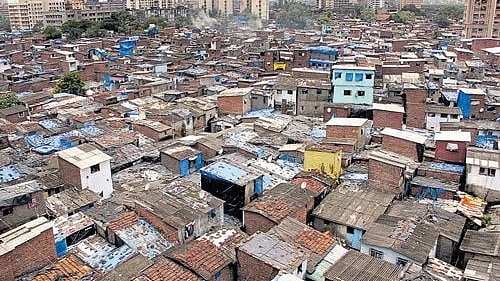The Dharavi Redevelopment Project (DRP) has been under constant scrutiny ever since it began, even though it marks real progress after several failed attempts in the past. Questions continue to be raised about how it will truly transform the lives of over a million Dharavikars, helping them move out of their poor living conditions.
However, opponents of the project are now attempting to create a fake narrative around DRP’s land allocation at the Deonar dumping ground, presenting an inaccurate and misleading portrayal. These narratives overlook crucial facts, distort the sequence of events, and misrepresent the intent of the project’s stakeholders.
To clarify, the Deonar land has been allotted to DRP/SRA but remains entirely under government ownership. Any future planning or development will strictly follow established government protocols. There are no plans for any form of construction on the Deonar site until the entire dump is cleared and cleaned up in accordance with all statutory requirements, including environmental, structural, and safety clearances.
As a government-led initiative, it is imperative that DRP and the project’s Special Purpose Vehicle (SPV) adhere to all applicable laws and processes once the dump is processed and removed. Despite the brouhaha, has anyone noticed that Deonar continues to fall under the jurisdiction of the Brihanmumbai Municipal Corporation (BMC)? As of now, DRP/SRA and the SPV have no operational or administrative control over the said land. Also, the land identified for allocation is only 124 acres, not the inflated figures being circulated. One wonders whether such speculative sensationalism truly serves the interests of Dharavikars or seeks to keep them condemned to their putrid conditions.
It is important to note that the reclamation of landfill sites is neither unprecedented nor experimental. Globally and within India, several such projects have been successfully executed using scientifically approved landfill mining and biomining techniques. The Kumbakonam Dump Yard project in Tamil Nadu, where over 2 lakh metric tonnes of waste were safely cleared, is a proven example. Similarly, the Mulund dumpyard in Mumbai has already been more than 70 per cent cleaned using biomining. The responsibility to biomine and clean the Deonar site lies solely with the BMC. Only after scientific clearance, environmental certification, and formal handover of the sanitized land will the government even evaluate its development potential. No redevelopment discussions can take place until this process is complete.
So how can detractors put out such alarmist and baseless statements, suggesting that people will be relocated to an active landfill? Do they already know the SPV’s plans? The DRP is a government initiative, and no resident will be relocated to any site unless it has been evaluated, cleared, and officially declared safe for habitation by the competent authorities. Furthermore, the ongoing eligibility survey is yet to determine the total number of beneficiaries, making the quoted figures speculative at best.
There are global examples of how landfill sites have been successfully transformed into sustainable ecosystems. In Singapore, Pulao Semakau, once a landfill, now supports marine life and eco-tourism. Lorong Halus, another former dump site, has been transformed into a scenic wetland that naturally purifies water. These examples reflect careful planning and a strong focus on environmental renewal. Turning waste disposal sites into vibrant, liveable spaces is achievable — far from the dire projections being circulated.
In conclusion, spreading misinformation risks creating fear and confusion among the very residents the Dharavi rehabilitation project seeks to uplift. Facts must lead this conversation, not unfounded fears.
The author is Senior leader of Shiv Sena (Shinde) and former M.P. whose constituency included Dharavi
